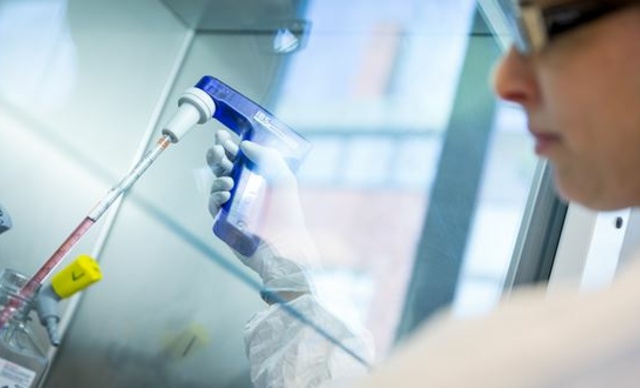3D printing for oncology
A new technological panacea, 3D printing could also be used to better understand how tumours develop. The goal of Institut Curie researchers is to create bones and observe the development of bone metastases, as part of a PIC3i project, self-financed to a large extent by public generosity.

As long as the tumour is localised, surgical removal often results in full patient recovery. When the cells acquire the ability to spread however, the tumour becomes metastatic and is more complex to eradicate.
Metastases can occur in many organs, but each type of cancer has a preferred metastasis site: liver, brain, bone, lung. Once metastases are detected, caregivers implement a suitable treatment strategy. Thanks to advances in chemotherapy, surgery and radiotherapy, a large number of metastases can today be controlled and treated. However, their complete eradication remains a challenge.
"Bone is a significant site for the appearance of metastases", recalls Jacques Camonis, CNRS director of research and head of the Transduction network analysis team, who is coordinating the programme. "It represents a specific physical and chemical environment which has never been taken into account until now in the development of bone metastases." This is the grey area that the researchers at Institut Curie wish to examine with their colleagues from the University of Toulouse.
From 3D printing to bone metastases
First step: using a D printer, or other bioengineering techniques, reproduce the structure of the bone. "Then, on this artificial skeleton, we need to grow mesenchymal stem cells that will become osteoblasts and manufacture bone on the scaffolding built by the 3D printing", explains the biologist. "It is only after this first phase that we can avail of a model that is sufficiently similar to reality." The success of this 1st step marks the start of the 2nd phase of the project - studying the growth of metastatic cells on this structure. Scientists will be able to avail of a system that is much closer to reality, and in 3D unlike the 2D experiments usually conducted with cell culture in dishes. Two rather than three dimensions represents a handicap for researchers. Cells do not behave in the same way when they are spread out on a carpet rather than operating in three dimensions. They don't have the same shape, don't organise or interact with the environment in the same way, move differently and are probably sensitive to different drugs.
"Initially, we will focus on a signalling pathway often deregulated in carcinogenesis, the Hippo pathway", adds Jacques Camonis. This pathway regulates two processes hindered in tumour cells - cell proliferation and apoptosis, a mechanism which triggers cell death."
This ambitious project should fill a gap: no pertinent model existed to monitor the development of bone metastases in conditions close to those of the organism. Until biologists had no choice but to conduct 2D studies. If this project is successful, this will be a thing of the past. Scientists and doctors will soon be able to avail of a reliable model to better understand how bone metastases occur and how to counteract them.
Coordinator
- Jacques Camonis, CNRS Research Director, Analysis of Transduction Pathways (ATP) team
Partner
- Pascal Silberzan, CNRS Research Director, Biology Inspired Physics at Mesoscales team
- Dr Paul Cottu, head of the day hospital
- Sergio Roman-Roman, head oof Translational Research department
- Jean-Louis Viovy, CNRS Research Director, Macromolecules and Microsystems in Biology and Medicine team
chef de l’équipe Macromolécules et microsystèmes en biologie et médecine (CNRS/UPMC/Institut Curie/Institut Pierre-Gilles de Gennes) - Laurent Malaquin, Laboratoire d'analyse et d'architecture des systèmes (université de Toulouse)
- Luc Sensebé, STROMAlab (CNRS/Inserm) Toulouse)
